I’ve renovated six bathrooms and these are the 7 key lessons I’ve learnt along the way
From ensuring your tub empties in a timely manner to avoiding black eyes at bedtime, here’s my tried-and-tested tips for bathroom reno success

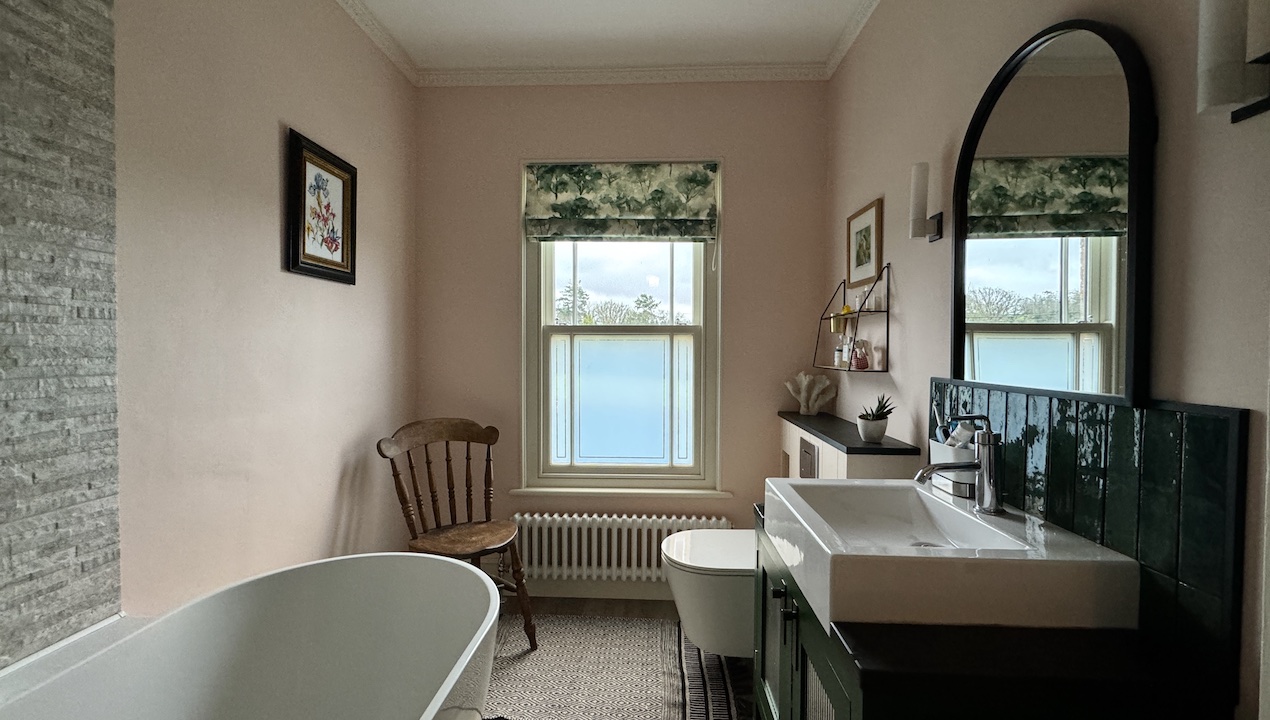
When I say I’ve renovated six bathrooms over the years, I’m not just talking about switching in a new suite and slapping up some tiles. They have all been brutal affairs, with floors ripped up, soil pipes moved, and, in one particularly stressful instance, we endured three weeks without a roof over the bath. Breezy.
I’m also something of a bathroom nerd, having worked as a specialist kitchen and bathroom journalist for more than two decades. I’ve witnessed toilets being made all over Europe (not glamorous but surprisingly fascinating) and sat frontstage at the glitzy launch of hundreds of new bathroom products (much more glamorous, not always fascinating). In short, I’ve learnt a lot about bathrooms, some of it the hard way, some with a glass of champers in hand.
Whether you’re a DIY pro or working out how to plan a bathroom for the very first time, there’s no such thing as too much information. In the world of water pressure, drainage gradients, gunky grout and moisture damage, knowledge is power.
One of the toughest lessons I learnt was the importance of getting decent trades in. Yes, your plumber needs all the proper qualifications to get your project safely past building control, but he or she also needs the experience to know which direction the bath taps should be turned for hot and cold. We’re still paying for that mistake. Get recommendations from your fussiest friends!
My bathroom renovation lessons
There are plenty of things you should never do when choosing a bathroom, but not all have the potential to obliterate your bank balance or wind you up until the day you die/move home. With the aim of saving you on both scores, and sharing some of the less sanitary advice you may not otherwise hear about until it happens, here’s my top priorities when renovating any bathroom.
1. Happiness is smooth traffic flow
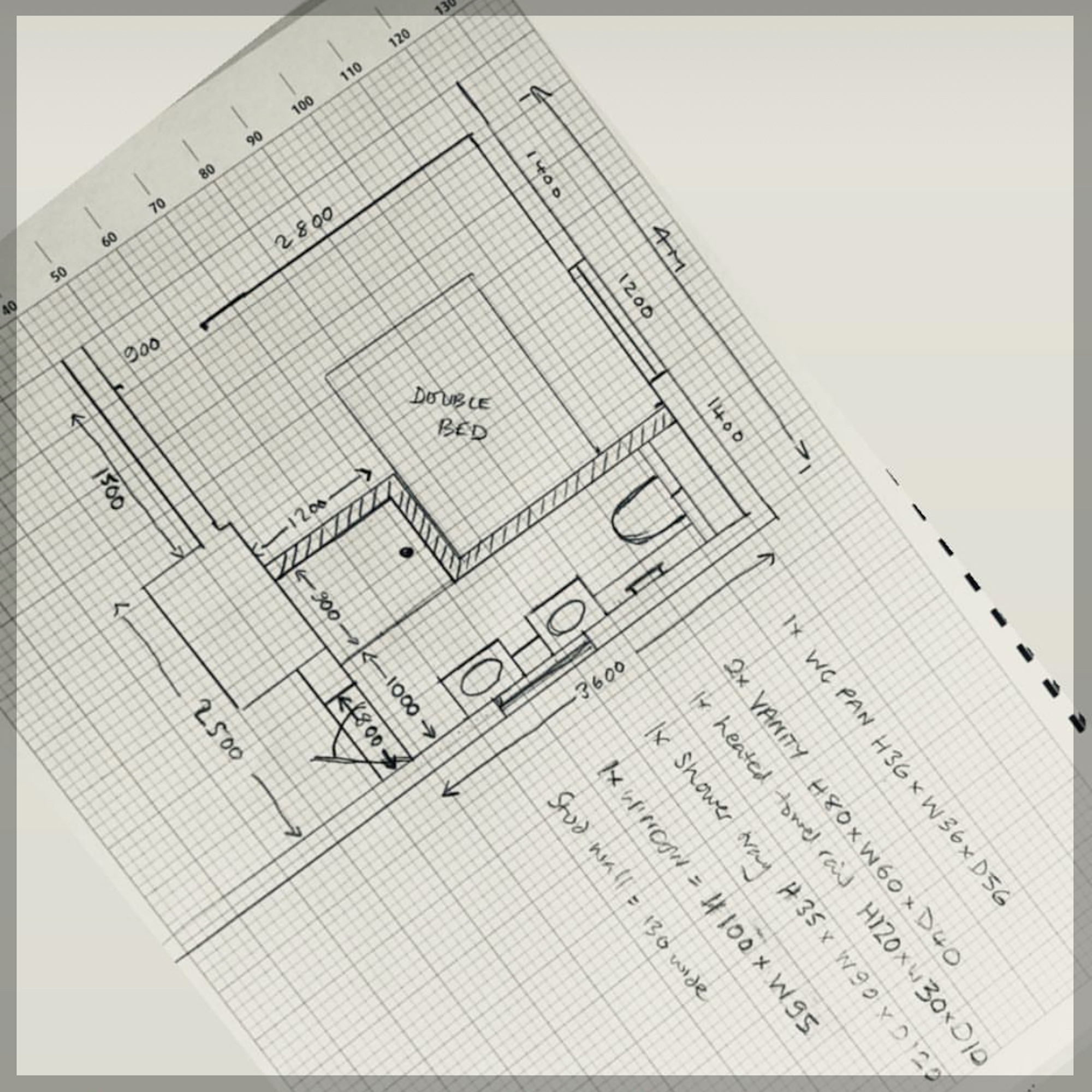
Everyone bangs on about the importance of considering how to plan a kitchen layout, but in the bathroom there is literally no room for mistakes. Squeezing past your partner to get out, being smacked in the knee by a cupboard handle, whacking the door against the loo every single time you exit the shower are all beyond annoying.
Admittedly, the layout of key fittings is generally dictated by the room’s pitiful dimensions. Your options will almost certainly be governed by the location of the window, doorway and soil pipe (more on that later).
Sign up to our newsletter for style inspiration, real homes, project and garden advice and shopping know-how
For me, focusing on the traffic flow and how to make it work as best as it possibly can in space-restricted conditions is worth every second (ok, hours). Being older than God, I like to use graph paper and a scale ruler to help visualise a layout and check for weak spots but you can probably do it quicker using a designer app.
This process involves problem-solving and, often, seeking out compact fittings, but time spent tweaking and fine-tuning on paper has the potential to swerve several costly mistakes so don’t rush it. Things to consider:
- Allow a minimum of 76cm clearance in front of fittings. I’d go for a little more in front of the toilet, as it’s not pleasant to sit down with a towel rail almost touching your nose (as I’ve discovered on my current ensuite loo, which I now use side-saddle. TMI?!).
- Think about how far doors must open for proper access, including doors on the vanity unit, shower enclosure, linen cupboard and main door. Sliding and pivot doors are your friend.
- Storage access can be an issue is small spaces. We added baskets inside our vanity units (with felt bases for smooth/quiet movement), which we pull out completely to grab what we want, rather than having to contort down between the bath and unit to reach stuff at the back.
- Work with the head height. If you have a sloping ceiling, like we did in the loft bathroom in our third home, make sure you save the tallest point for the shower head. A ceiling-mounted rose can provide a couple extra inches compared to a wall-mounted. Men can sit down to wee if absolutely necessary, but nobody enjoys bending double under a shower to wet their hair.
- If you have a double basin, make sure there are also two mirrors, two taps etc, and enough room to brush your teeth in tandem without giving/gaining a black eye.
- In an ensuite situation, do everything in your power not to position the toilet in direct view from the bed. Nobody wants to wake up to that sight, especially if it’s in use by someone without door-closing skills [I’m looking at you, Mr Clayton!].
2. Balance the budget
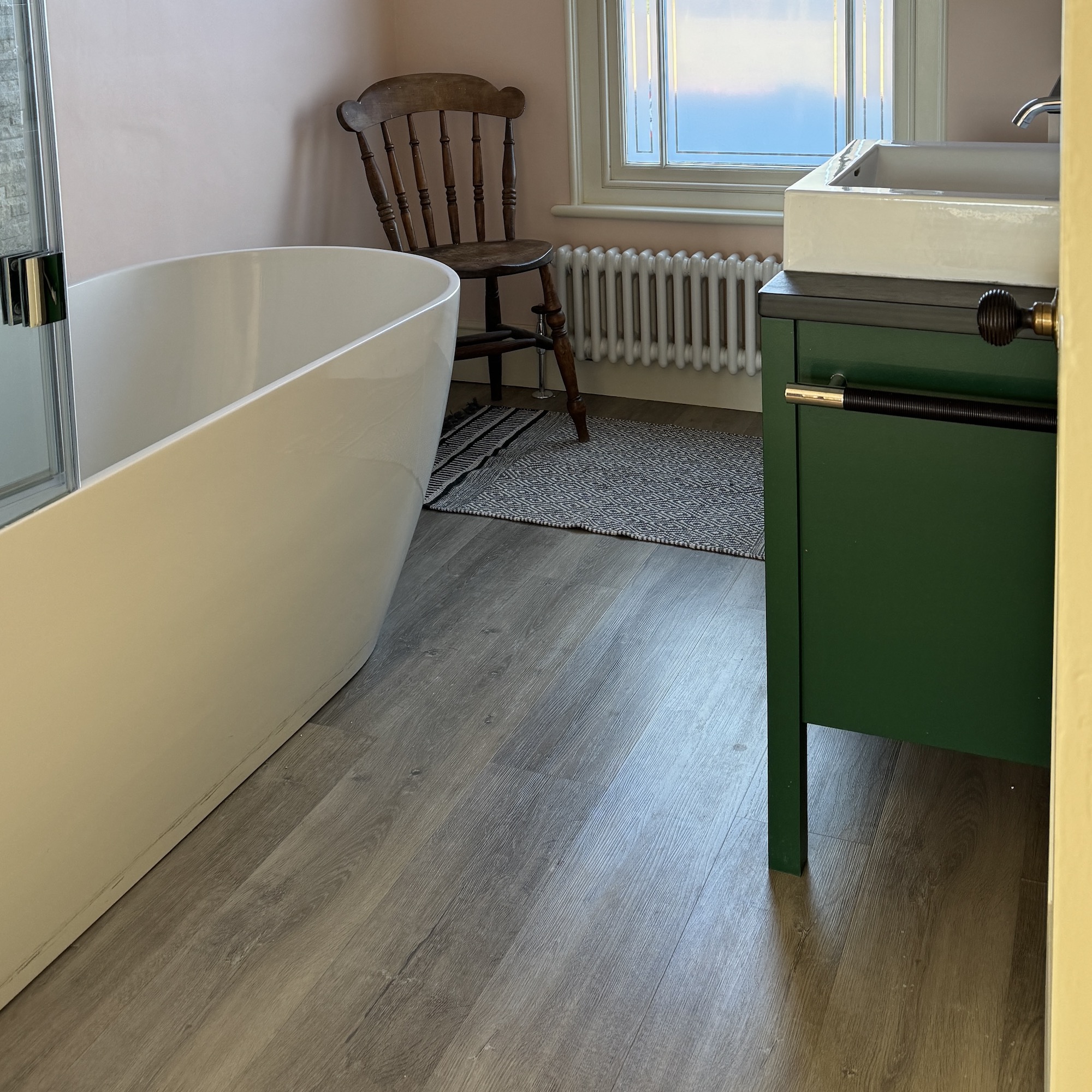
The wood-look luxury vinyl flooring is family-friendly
Unless you have access to Jeff Bezos’ Amex card, you’re probably all too familiar with the ‘spend vs splurge’ concept, and the bathroom is a prime candidate for working out where to spend and where to save. However, you do have to be quite savvy about it. I probably won’t be very popular with designer brands for saying this, but you really don’t have to spend big on sanitaryware, especially ceramics. I got a ceramic basin and wall-hung toilet with a posh soft-close seat for our family bathroom for under £450 at Victoria Plumbing.
I also saved by choosing vinyl flooring instead of tiles for our bathroom flooring. The click-together waterproof planks were astonishingly easy to fit ourselves, so no installation costs, and we didn’t have the extra expense of screed, adhesive and grout that comes with tiling. They’re super easy to clean and warm underfoot, too. Other potential savings include the shower screen; go for a fixed screen if you’re worried about cheap hinge mechanisms, and towel rails. Our simple white ladder rail was around £80 at Bestheating.com.
Also, while the experts will insist bathroom mirror ideas must involve mirrors designed specifically for bathroom use, I’ve always just bought regular (dirt cheap) mirrors and taped around the frame at the back with Gorilla Tape to prevent moisture ingress, and it’s never failed yet.
The main instance I wouldn’t risk going for a bargain basement is on brassware, especially the shower controls. I’ve done it, ordering some random kit from eBay (i.e. China) and it was an unmitigated disaster, lasting less than a year before the knobs fell off and the spray head started dripping. Now I spend more and make sure all my brassware comes with warranties.
Oh, and don’t scrimp on a concealed toilet cistern for a wall-hung loo; they’re a nightmare to fix. Geberit is my go-to.
3. Don’t underestimate the impact of drainage
If you’ve ever stood in a pool of rapidly cooling water while showering or waited seven years for the bath to empty, you’ll appreciate the frustrations of poorly laid drainage. For water to drain away quickly, you’ll need a minimum 1/40 drop in the pipework under the floor – which basically means it needs to angle downwards by 1cm for every 40cm length of pipe.
The closer your drain (be that the shower or bath trap) is to the exit point (external soil pipe), the less drop you’ll need. So, if your plumber overrules your plan to place the bath two metres from the soil pipe, it’s probably because there isn’t sufficient space between the floor joists to achieve the correct drainage fall. Unless you raise the floor level but that’s a whole new world of pain (especially for your toes every time you stub them on the new step). It’s all very boring but you’ll regret it if you don’t listen.
4. Be smart about storage
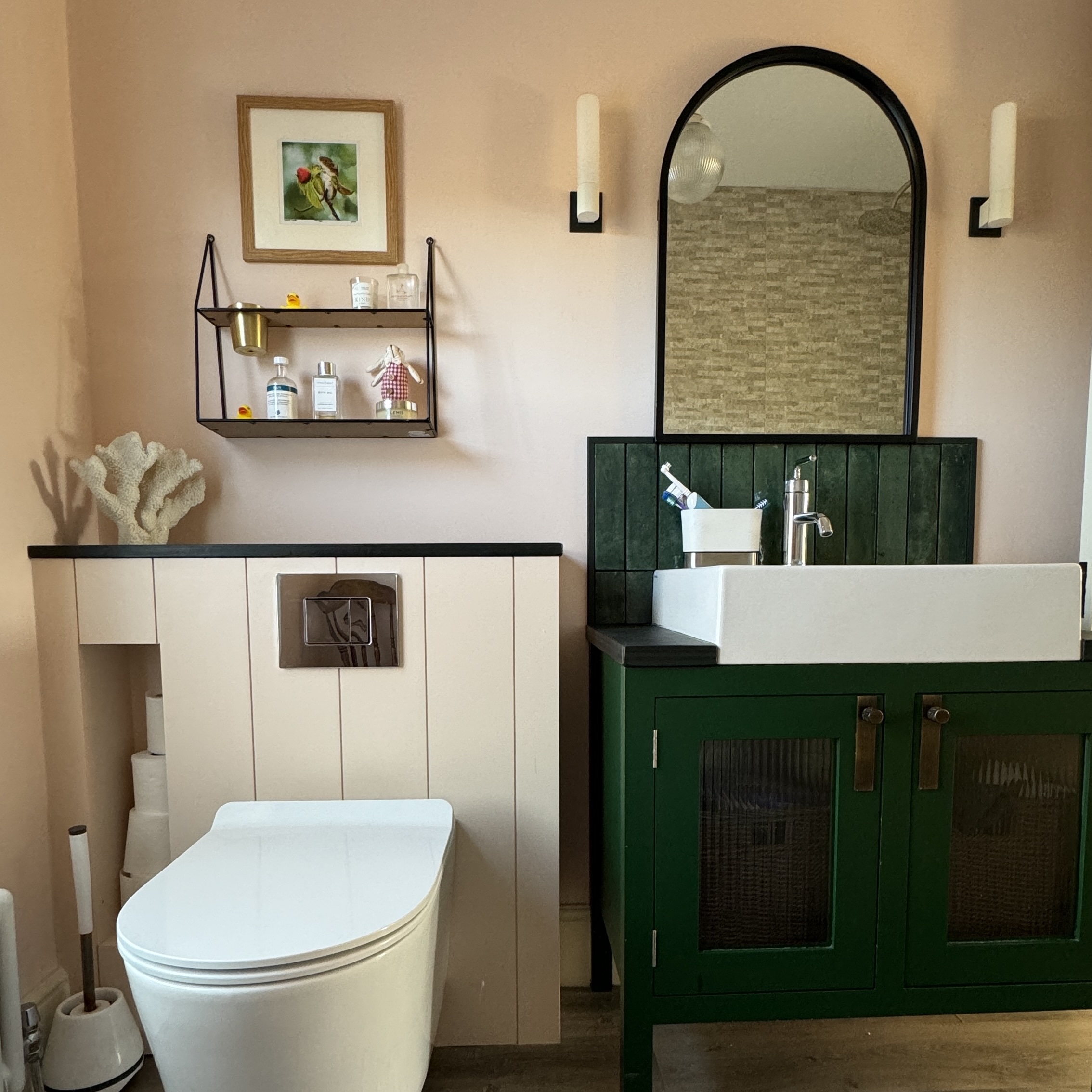
My girls decorate the shelves, no judgement please!
They say there’s ‘no such thing as too much storage’ but in a bathroom, that’s just not true. In the first bathroom we renovated, I was desperate for a stonking linen cupboard that would take all our bedding, an obscene number of towels (a popular press gift in the bathroom trade), the world, and probably his wife, too.
So that’s what we did; at the expense of a separate shower enclosure because it was our first home, and sadly not a Tardis. Obviously, I regretted the decision, not least because all the linen and towels got damp and musty, despite having a decent extractor fan in place.
Since then, I’ve been more restrained with my bathroom storage ideas, and focused more on location than capacity. Spare towels and bedding live in the nice, dry spare bedroom, so we just need storage in the bathroom for toiletries and spare loo roll. I like to keep the basin area as clutter-free as possible, which is why I love a proper vanity cupboard beneath that you can shove every into, but easily reach, leaving only the toothbrush holder and hand soap on view.
In the shower, I am all over a recessed niche, positioned well away from the showerhead so lotions and potions don’t get drenched (do allow a subtle gradient for draining purposes). It’s a far nicer solution than any chrome shower rack I’ve ever met, and better than having to bend down to grab bottles from the floor. There’s a similar niche built into the cistern boxing in the family bathroom, which is sized to stack toilet rolls so you’ll never get caught short when sat on our loo!
5. Prioritise easy cleaning
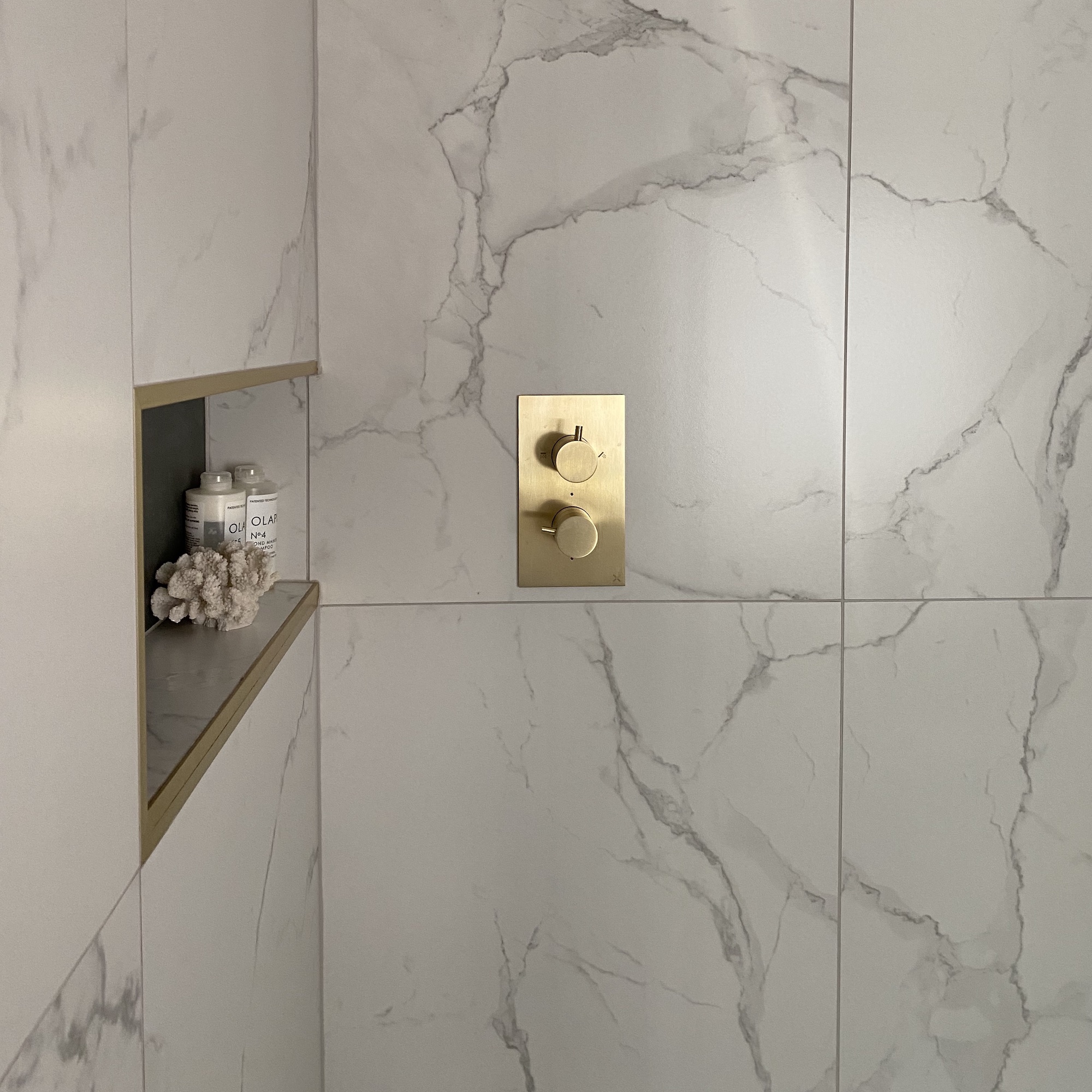
Large format porcelain tiles with minimal grout lines
Putting low maintenance ahead of gorgeousness is extremely dull, but so is cleaning the bathroom. In no particular order, you will thank me if you invest in:
1. Shower screens/enclosures with specialist easy-clean coatings – genius.
2. Ceramic or porcelain tiles over any natural options.
3. Ceramic basins over composite stone (I have both, one stains like red wine on a wedding dress, the other doesn’t).
4. A rimless toilet bowl. I don’t have one, but my mum does, and she loves it more than she loves me.
5. An easy-clean showerhead with the little rubber nozzles that are so satisfyingly simple to clean.
6. A toilet brush with silicone bristles, because regular fibrous brushes are just disgusting.
And then there’s the dreaded grubby grout. Over the years, I have tried all manner of stain removal, stain protection and stain prevention solutions on bathroom grout and none of them work. Or if they do, it’s painfully short-lived. Now I take the three-pronged approach of only tiling where absolutely necessary, using dark coloured grout, and/or going for XL format rectified tiles with the slimmest grout gaps possible. Rectified tiles, which have machine-perfect measurements, are best for this.
I also invested in a tile trim like this one to go between the bath and tiles in our current bathroom, to hide the equally dirt-prone silicone seal required around a fitted bath, which kind of works but looks a bit static caravan!
6. You’ll never regret one or two luxuries

The double vanity in our ensuite is a marriage-saver
Sure, a steam shower and infinity tub are unicorn impossible for most, but every bathroom should have at least one or two luxury moments that take it beyond a mere wash space. For us, it’s the electric underfloor heating and spacious double basin.
My husband and I generally get up and go to bed at the same time, so the latter has virtually saved our marriage. As I always need a nocturnal ‘comfort break’ the heated floor saves me from the shock of freezing tiles at 1am. We’re lucky enough to have solar panels, so I don’t lose sleep over the running costs either.
The luxury element(s) may be something else entirely for you – perhaps a bum-washing loo or built-in sound, but, while the initial expense might sting, the daily pleasure will make you happy for years to come.
7. ‘Living’ finishes are not for perfectionists
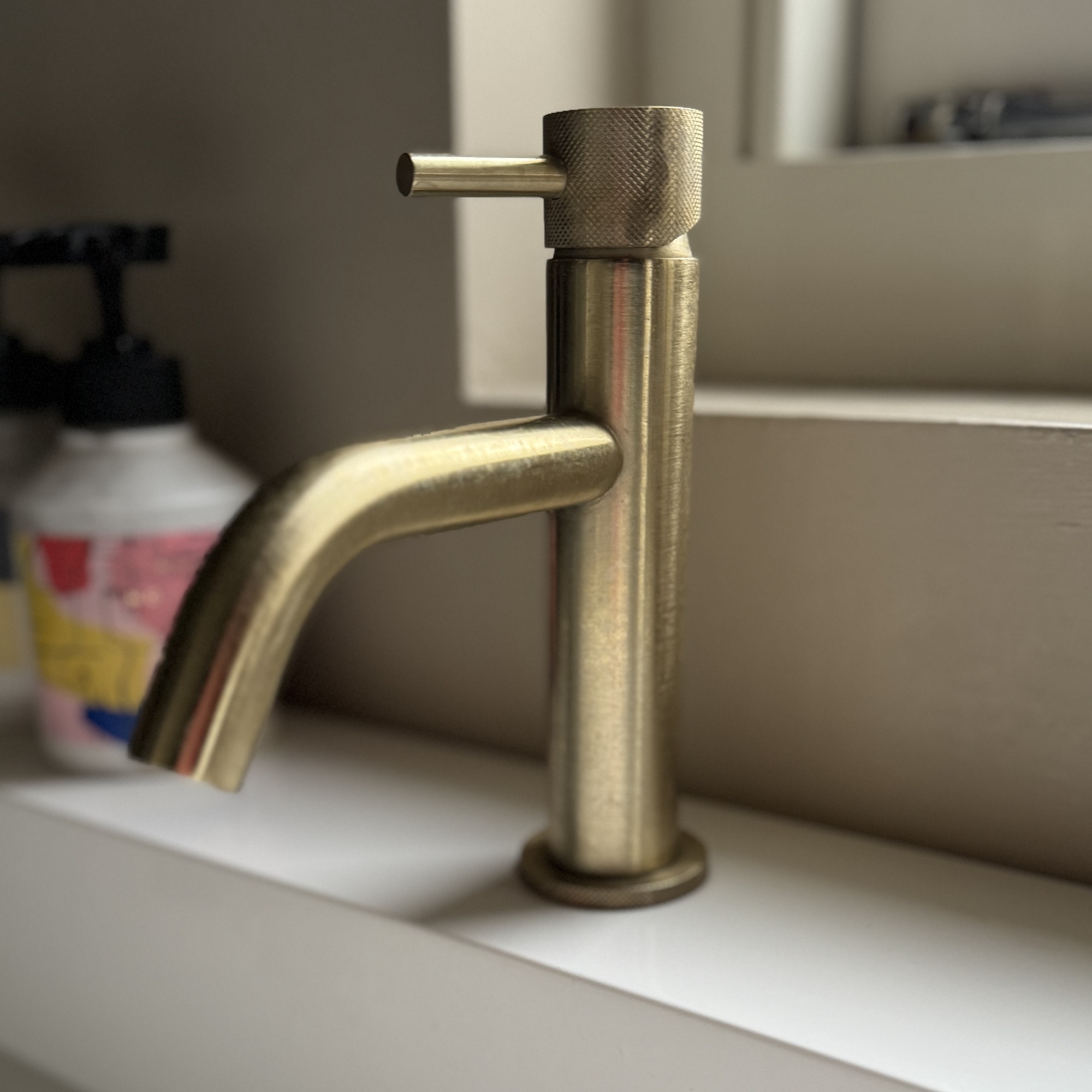
Spot the blemish on my lovely brass tap.
Living finishes are essentially unlacquered metals – typically brass, copper and bronze – that are unsealed so will patina in time. In moisture-rich bathrooms, the patina process is pretty speedy, and they can also be easily marked and stained by any soaps and cleaners with acidic ingredients, which is most of them, and of course bleach etc.
I bought into the brass trend for our ensuite and invested in Crosswater’s gorgeous MPRO range in brushed brass, which comes with a reassuring 15-year guarantee. I then discovered it was almost impossible, at that time, to find the exact same brass finish for the other metallic items in the bathroom. Annoying. Eventually, I went with a black frame for the shower door and mirrors and zhuzhed them up with brushed brass tile trim.
I do seriously love how the brushed brass taps and shower controls look but I was gutted to discover, a mere week after installation, that our bathroom hand soap contained citrus. I switched to Dove, but it was too late, and now I’m just waiting, impatiently, for the rest of the patina’ing to catch up so the stain is not quite so obvious.
In our family bathroom, I wisely chose chrome, which is easy to coordinate and still looks as clean, shiny and new as it did the day it was fitted (about six years ago now). If you hadn’t guessed, the moral of this tale is you must be a certain kind of (relaxed) person to enjoy the living finish life. I am not that person.
Linda's bathroom renovation cheat sheet
- Use tradespeople with glowing reviews, from people you trust
- Plan the layout on paper and run it past the experts
- Invest in decent taps and showers, with decent warranties
- Save on ceramic tiles and accessories
- Don’t go OTT on storage; location is more important than capacity
- Treat yourself to a couple of luxe touches
- Always consider how you'll clean it
- Think carefully about how brassware finishes will age

Linda Clayton is a professionally trained journalist, and has specialised in product design, interiors and fitness for more than two decades. Linda has written for a wide range of publications, from the Daily Telegraph and Guardian to Homes & Gardens and Livingetc. She has been freelancing for Ideal Home Magazine since 2008, covering design trends, home makeovers, product reviews and much more.